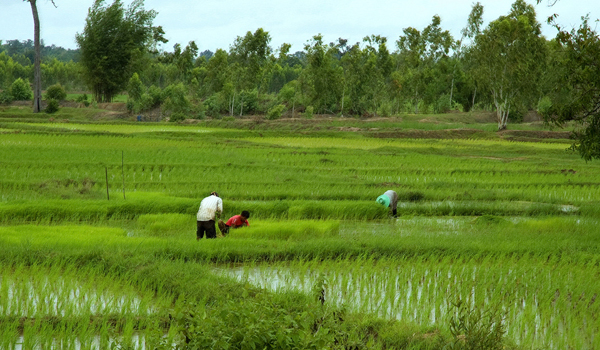What's Genetic Engineering?

Genetic engineering is the process of using technology to change the genetic makeup of an organism - be it an animal, plant or a bacterium.
This can be achieved by using recombinant DNA (rDNA), or DNA that has been isolated from two or more different organisms and then incorporated into a single molecule, according to the National Human Genome Research Institute (NHGRI).
Recombinant DNA technology was first developed in the early 1970s, and the first genetic engineering company, Genentech, was founded in 1976. The company isolated the genes for human insulin into E. coli bacteria, which allowed the bacteria to produce human insulin.
After approval by the Food and Drug Administration (FDA), Genentech produced the first recombinant DNA drug, human insulin, in 1982. The first genetically engineered vaccine for humans was approved by the FDA in 1987 and was for hepatitis B.
Since the 1980s, genetic engineering has been used to produce everything from a more environmentally friendly lithium-ion battery to infection-resistant crops such as the HoneySweet Plum. These organisms made by genetic engineering, called genetically modified organisms (GMOs), can be bred to be less susceptible to diseases or to withstand specific environmental conditions.
But critics say that genetic engineering is dangerous. In 1997, a photo of a mouse with what looked like a human ear growing out of its back sparked a backlash against using genetic engineering. But the mouse was not the result of genetic engineering, and the ear did not contain any human cells. It was created by implanting a mold made of biodegradable mesh in the shape of a 3-year-old's ear under the mouse's skin, according to the National Science Foundation, in order to demonstrate one way to produce cartilage tissue in a lab.
While genetic engineering involves the direct manipulation of one or more genes, DNA can also be controlled through selective breeding. Precision breeding, for example, is an organic farming technique that includes monitoring the reproduction of species members so that the resulting offspring have desirable traits.
Get the world’s most fascinating discoveries delivered straight to your inbox.
A recent example of the use of precision breeding is the creation of a new type of rice. To address the issue of flooding wiping out rice crops in China, Pamela Ronald, a professor of plant pathology at the University of California-Davis, developed a more flood-tolerant strain of rice seed.
Using a wild species of rice that is native to Mali, Ronald identified a gene, called Sub1, and introduced it into normal rice varieties using precision breeding creating rice that can withstand being submerged in water for 17 days, rather than the usual three.
Calling the new, hardier rice the Xa21 strain, researchers hope to have it join the ranks of other GMOs currently being commercially grown worldwide, including herbicide-tolerant or insect-resistant soy, cotton and corn, within the next year, Ronald said. For farmers in China, the world's top producer and consumer of rice, being able to harvest enough of the crop to support their families is literally a matter of life and death.
Because Ronald used precision breeding rather than genetic engineering, the rice will hopefully meet with acceptance among critics of genetic engineering, Ronald said.
"The farmers experienced three to five fold increases in yield due to flood tolerance," Ronald said at a World Science Festival presentation in New York. "This rice demonstrates how genetics can be used to improve the lives of impoverished people."
Got a question? Email it to Life's Little Mysteries and we'll try to answer it. Due to the volume of questions, we unfortunately can't reply individually, but we will publish answers to the most intriguing questions, so check back soon.
